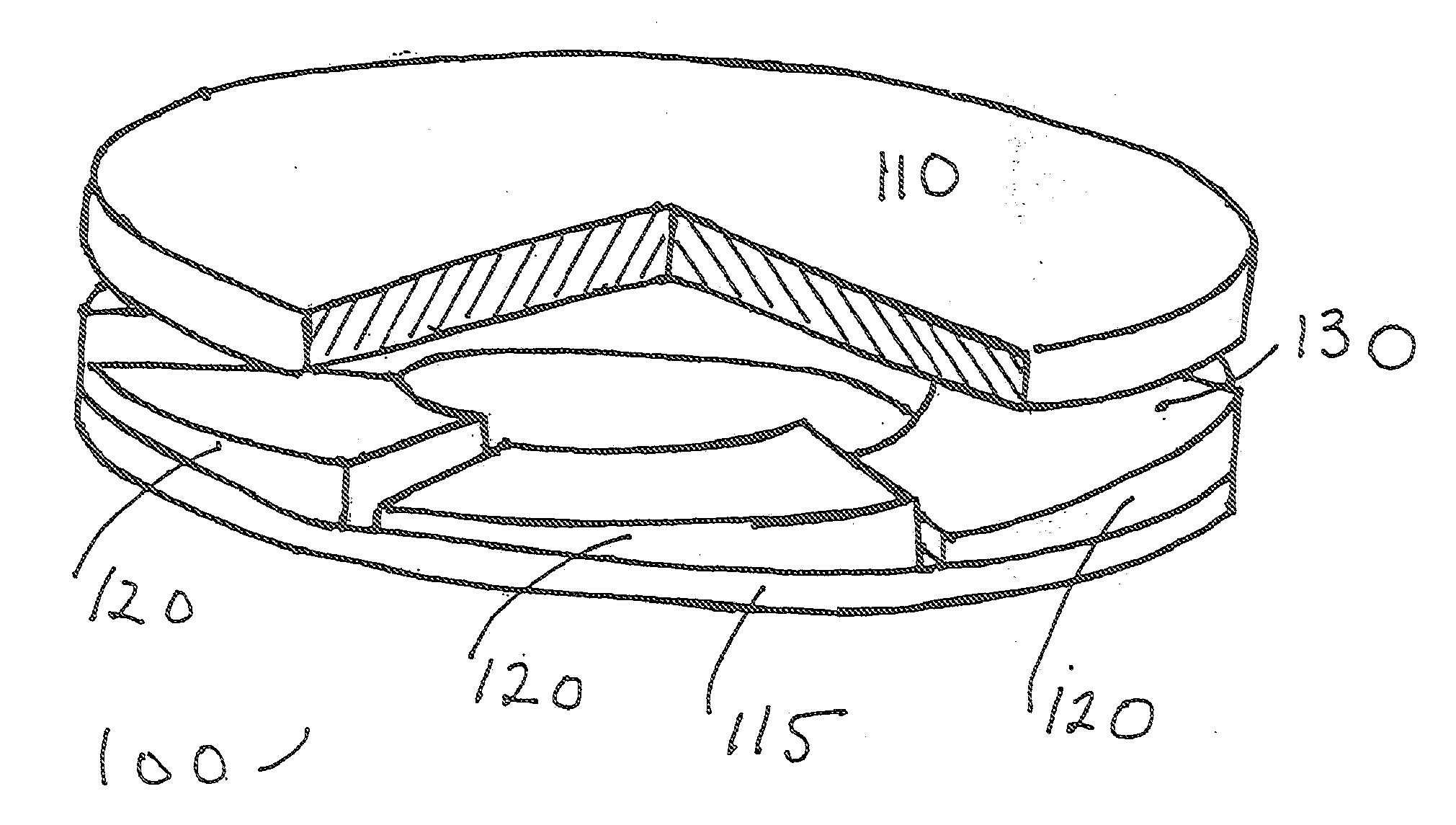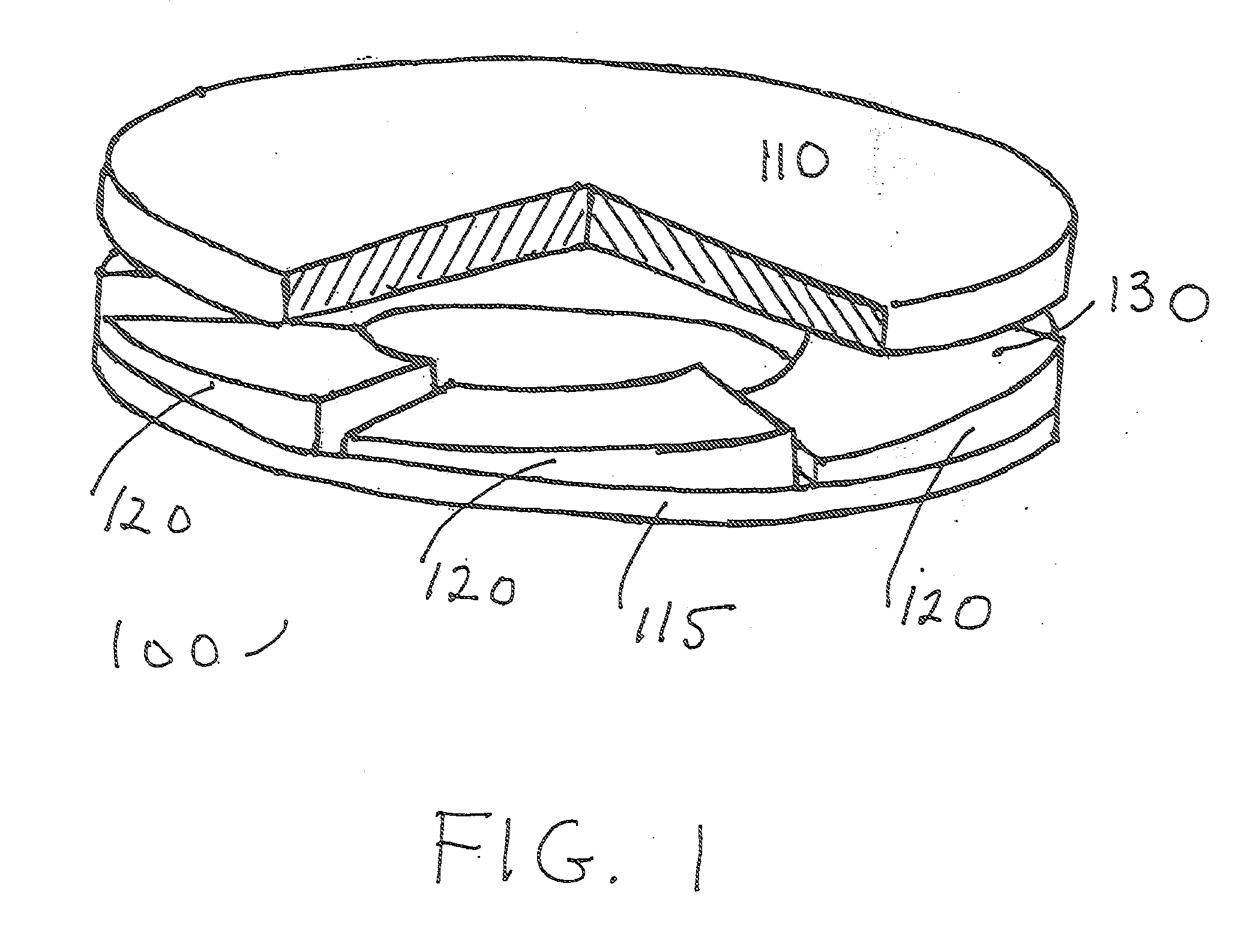Composite-film bearings
a technology of composite film and bearing, applied in the direction of bearings, shafts and bearings, rotary bearings, etc., can solve the problems of large frictional energy loss, limited energy efficiency, energy loss through tribological elements, etc., and achieve the effect of superior protection and minimization of frictional energy loss
- Summary
- Abstract
- Description
- Claims
- Application Information
AI Technical Summary
Benefits of technology
Problems solved by technology
Method used
Image
Examples
Embodiment Construction
[0019] Improved composite-film, hydrodynamic bearings including a bi-component lubricant film are shown in FIGS. 1-4. The invention will be described in detail with respect to the figures.
[0020]FIGS. 1 and 2 show a thrust bearing 100 according to an embodiment of the invention. The thrust bearing 100 includes a load-transmitting, rotatable or reciprocatable runner 110, a load-bearing element or thrust plate 115 axially spaced from the runner 110 and at least one porous bearing pad 120 supported by the thrust plate 115. The runner 110 may be constructed, for example, of steel coated with tin-base alloys, lead-base alloys, copper-lead alloys, bronzes, or other suitable materials. The bearing pad 120 may be constructed, for example, of sintered metals or other suitable materials. A clearance space 130 is disposed between the runner 110 and the bearing pad 120. A dual-layer, hi-component lubricant film 160 is disposed in the clearance space 130 for lubricating the runner 110 and the be...
PUM
 Login to View More
Login to View More Abstract
Description
Claims
Application Information
 Login to View More
Login to View More - R&D
- Intellectual Property
- Life Sciences
- Materials
- Tech Scout
- Unparalleled Data Quality
- Higher Quality Content
- 60% Fewer Hallucinations
Browse by: Latest US Patents, China's latest patents, Technical Efficacy Thesaurus, Application Domain, Technology Topic, Popular Technical Reports.
© 2025 PatSnap. All rights reserved.Legal|Privacy policy|Modern Slavery Act Transparency Statement|Sitemap|About US| Contact US: help@patsnap.com



